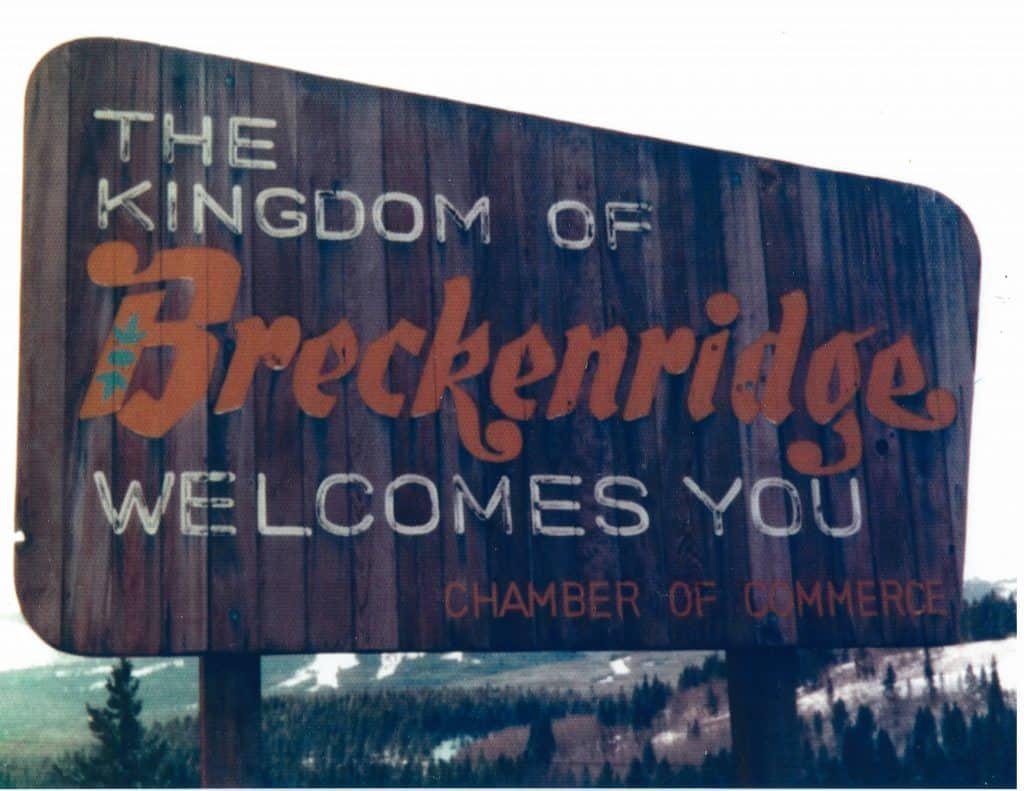The Kingdom of Breckenridge: The story of the mountain town’s first ‘viral’ tourism campaign and how it helped shape its celebratory legacy

The town of Breckenridge has long served as a highly sought-after travel destination. From a bustling main street that captures the tangible spirit of the American West to nearly 3,000 acres of ski terrain spread across the numerous peaks that serve as its backdrop, the town is a crown jewel of Colorado’s High Country.
But nearly a century ago, Breckenridge’s landscape was a far cry from the vibrant tourism community it is today. Having seen the end of gold and silver booms and amid the grip of the Great Depression, the area’s dwindling population was in dire need of rejuvenation.
“Breckenridge was suffering at that time,” said Larissa O’Neil, executive director of the nonprofit Breckenridge History, which was formally the Breckenridge Heritage Alliance.
According to Summit Historical Alliance board president Sally Queen, this is a time that also predates the town — and the county’s — status as a ski destination. Arapahoe Basin was the county’s first ski area to open in 1946 followed by Breckenridge in 1961.
“It’s still a fairly isolated community,” Queen said of Breckenridge. “There is still mining going on but not at the level of the late 19th century, early 20th century.”
When the town was searching for its next identity after the allure of gold and silver had run dry, it was during this era that a women’s club came across a map. With it an idea formed that would turn into a spectacle for generations to come.
In 1936, women in this club, which consisted of the “movers and shakers” of the time, according to O’Neil, discovered a map from 1880 that contained a “donut hole” mistake. Amid the jigsaw puzzle of treaty lines showing the westward expansion of the United States — remnants of conflicts including the Mexican-American war, the annexation of Texas and the Louisiana Purchase — Breckenridge was missing entirely.
See and experience history
To enjoy and learn the rich history of Breckenridge and Summit County, stop by one of the county’s nonprofit museums that feature authentic memorabilia of the area’s storied past — including remnants of No Man’s Land and The Kingdom.
Since it did not appear as part of the United States, the women’s group claimed Breckenridge was an independent territory and used the gimmick to establish the first “No Man’s Land” festival, which was hosted Aug. 7, 1936, according to O’Neil.
The event brought together dignitaries and politicians, including Colorado Gov. Ed Johnson — who shares his name with President Dwight D. Eisenhower on the Eisenhower-Johnson Memorial Tunnel — as well as navy officers and officials of neighboring municipalities. A brass band performed outside the county’s courthouse building on Lincoln Avenue as the Colorado flag was raised into the air and Gov. Johnson officially welcomed Breckenridge into the state of Colorado.

Theories of an independent Breckenridge were soon debunked after a state historian that same year provided evidence of maps marking the town. Maps currently on display at the Summit Historical Society museum in Dillon even show Breckenridge prior to Colorado’s founding as a state, with one from 1861 showing the town as part of Summit County, back when the area was a territory and when the county used to encompass all of what is now northwest Colorado.
But for those who had turned the mistake into cause for celebration, it didn’t matter. “No Man’s Land” was “so wildly successful” that iterations of the festivities continued yearly up until 2000, O’Neil said. Meanwhile, in the 1960s, a similar event began that served as a sort of “spin off” to that same gimmick.
What many residents and tourists now know and love as Ullr Fest, an annual celebration of “all things winter and snow,” first began as Ullr Dag in 1963. It was during this celebration that Breckenridge rebranded itself as “The Kingdom,” a reference to the 1880 map that neglected the town.
Stepping even further into its unabashed tourism ploy, the town featured a king and queen, posted checkpoints where visitors were required to show Visas and even minted its own currency — much to the ire of the U.S. Treasury Department, which quickly stepped in to denounce the fake money, according to O’Neil.
Nonetheless, “The Kingdom” and the celebration built around it “became an identity for Breckenridge for years,” O’Neil said.
Today, remnants of that legacy live on such as the aptly named Kingdom Park, located just north of the town’s main street off U.S. Highway 9, as well as in its general spirit for festivity.
For Queen, the Summit Historical Society board president, the events “helped establish Breckenridge as that location that has great festivals,” from Ullr Fest to the more recently established International Snow Sculpture Championships.
And Summer 2023 is no different thanks to a jam-packed lineup of festivities for locals and visitors. Those include the town’s Independence Day celebration, bacon and bourbon hogfest, beer festival, food and wine festival and Breck Epic — a multiday mountain bike race held in and around the backcountry surrounding Breckenridge.

For those wanting to learn even more about Breckenridge’s history, they can make a visit to the historical society’s Dillon Schoolhouse Museum, located in an original homestead schoolhouse, as well as Breckenridge History’s Barney Ford Museum, located in the home of a Black civil rights pioneer.
“I think that the whole idea of The Kingdom and No Man’s Land is a fun, quirky part of our past that relates to who we are today,” O’Neil said.
Published on SummitDaily.com.
